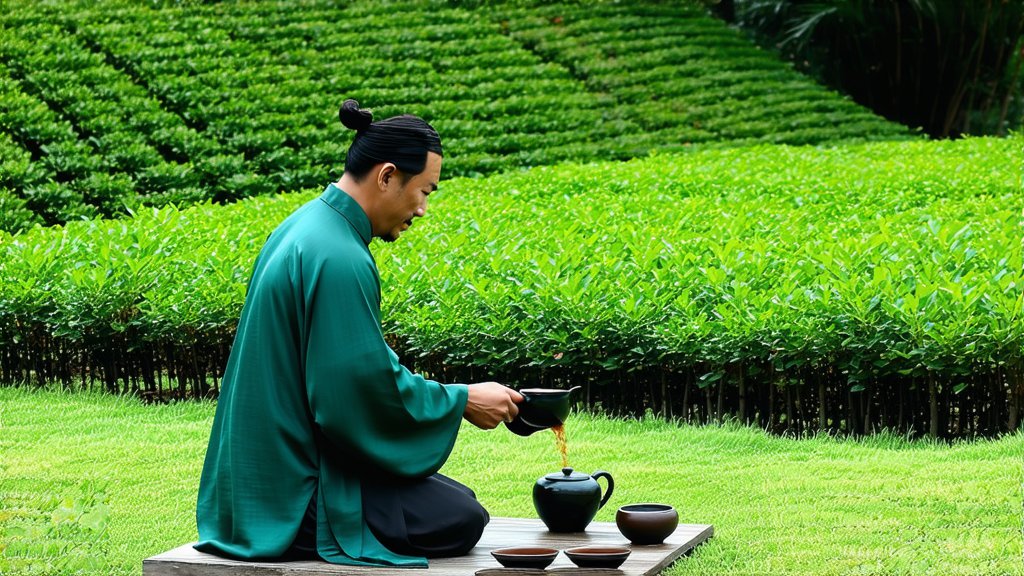
In the vast tapestry of global tea culture, few varieties hold as storied a history or as revered a place as Keemun black tea. Originating from the picturesque hills of Qimen County in Anhui Province, China, Keemun tea is more than just a beverage; it is a testament to centuries of tradition, craftsmanship, and cultural heritage. This article delves into the rich history, diverse varieties, intricate production process, and sophisticated art of appreciating this exquisite Chinese tea.
A Historical Journey
The tale of Keemun tea begins in the Tang Dynasty (618-907 AD), when tea was first introduced to China. However, it wasn't until the Qing Dynasty (1644-1912) that Keemun gained prominence. Legend has it that during this period, a local tea farmer named Xie Chenglu discovered the unique processing method that would give birth to what we now know as Keemun. His innovation involved withering, rolling, fermenting, and drying the tea leaves in a manner that brought out their distinctive flavor profile – a balance between sweetness and smokiness.
Keemun quickly became a favorite among the imperial court and gained international acclaim, especially after winning numerous awards at the World Tea Exhibition in Belgium in 1915. Its reputation spread far beyond China's borders, making it one of the most sought-after teas globally.
Varieties and Characteristics
Keemun tea is not a single type but a category that encompasses several sub-varieties, each with its own unique characteristics. The two main types are Gongfu Keemun and Zhenzi Keemun.
Gongfu Keemun: Often referred to as "Congou" or "Kung Fu," this variety is known for its smaller leaf size and more refined taste. It undergoes additional rolling and drying stages, resulting in a tighter curl and a smoother texture. Gongfu Keemun is prized for its delicate aroma, which features hints of orchid and honey, and its bright, clear liquor.
Zhenzi Keemun: Meaning "prince" in Mandarin, Zhenzi Keemun is considered a higher grade due to its larger leaf size and more robust flavor profile. It is characterized by a stronger body, deeper color, and a slightly more pronounced smoky note compared to Gongfu Keemun. Zhenzi Keemun offers a fuller experience, with flavors reminiscent of caramel, nuts, and dried fruit.
The Craft of Production
The production of Keemun tea is an art form that requires meticulous attention to detail and adherence to time-honored techniques. Here's a glimpse into the intricate process:
-
Plucking: Only the youngest, freshest leaves and buds are handpicked, typically in early spring when they are at their peak vitality and flavor.
-
Withering: The freshly picked leaves are spread out thinly on bamboo mats under the sun or in well-ventilated rooms to reduce moisture content, allowing enzymes to start breaking down complex compounds within the leaves.
-
Rolling: Withered leaves are then meticulously rolled using traditional methods or modern machinery to release juices and initiate oxidation. This step also shapes the leaves and contributes to their final appearance.
-
Fermentation: Rolling accelerates oxidation, where polyphenols react with oxygen, forming theaflavins and thearubigins responsible for Keemun's distinct color and taste. This process is carefully monitored to achieve the desired level of oxidation.
-
Drying: After fermentation, the leaves undergo a final drying phase, either through pan-firing or sun-drying, to halt oxidation and lock in flavors. This step also enhances the tea's aroma and shelf life.
-
Sorting and Grading: The dried tea is then sorted based on leaf size, quality, and overall appearance. Higher grades like Gongfu and Zhenzi are separated for premium packaging.
The Art of Appreciation
To truly appreciate Keemun tea, one must engage in the ritualistic practice of Gongfu Cha, or "Kung Fu Tea." This method emphasizes precision, patience, and mindfulness, transforming tea drinking into a meditative experience. Here’s how to perform Gongfu Cha with Keemun:
-
Preparation: Use a Yixing clay teapot or a Gaiwan (a lidded bowl) for optimal heat retention and flavor extraction. Warm the utensils with hot water before use.
-
Measurement: For a standard session, use about 5 grams of Keemun tea per 150ml of water capacity. Adjust according to personal preference.
-
Rinsing: Rinse the tea leaves briefly with near-boiling water (around 95°C/203°F) to awaken them and remove any surface impurities. Discard this first infusion.
-
Steeping: Add hot water to the teapot and let it steep for approximately 30 seconds for the initial infusion. Subsequent infusions can be extended gradually by 10-15 seconds each time, depending on personal taste.
-
Pouring and Sipping: When pouring the tea into cups, ensure even distribution to maintain balance. Savor each sip slowly, focusing on the evolving flavors and aromas. Notice the initial floral notes, followed by the sweetness, body, and subtle smokiness that lingers on the palate.
-
Multiple Infusions: Keemun tea is renowned for its ability to withstand multiple infusions without losing flavor. Each subsequent brew reveals different facets of its complexity.
Conclusion
Keemun black tea stands as a shining example of China's rich tea heritage, embodying centuries of tradition, innovation, and artistry. From its humble beginnings in the mist-shrouded mountains of Qimen County to its status as a globally recognized symbol of fine tea, Keemun continues to captivate tea connoisseurs worldwide. Whether enjoyed through the meticulous practice of Gongfu Cha or simply savored as a moment of tranquility, its depth and character offer an invitation to explore the profound world of Chinese tea culture.